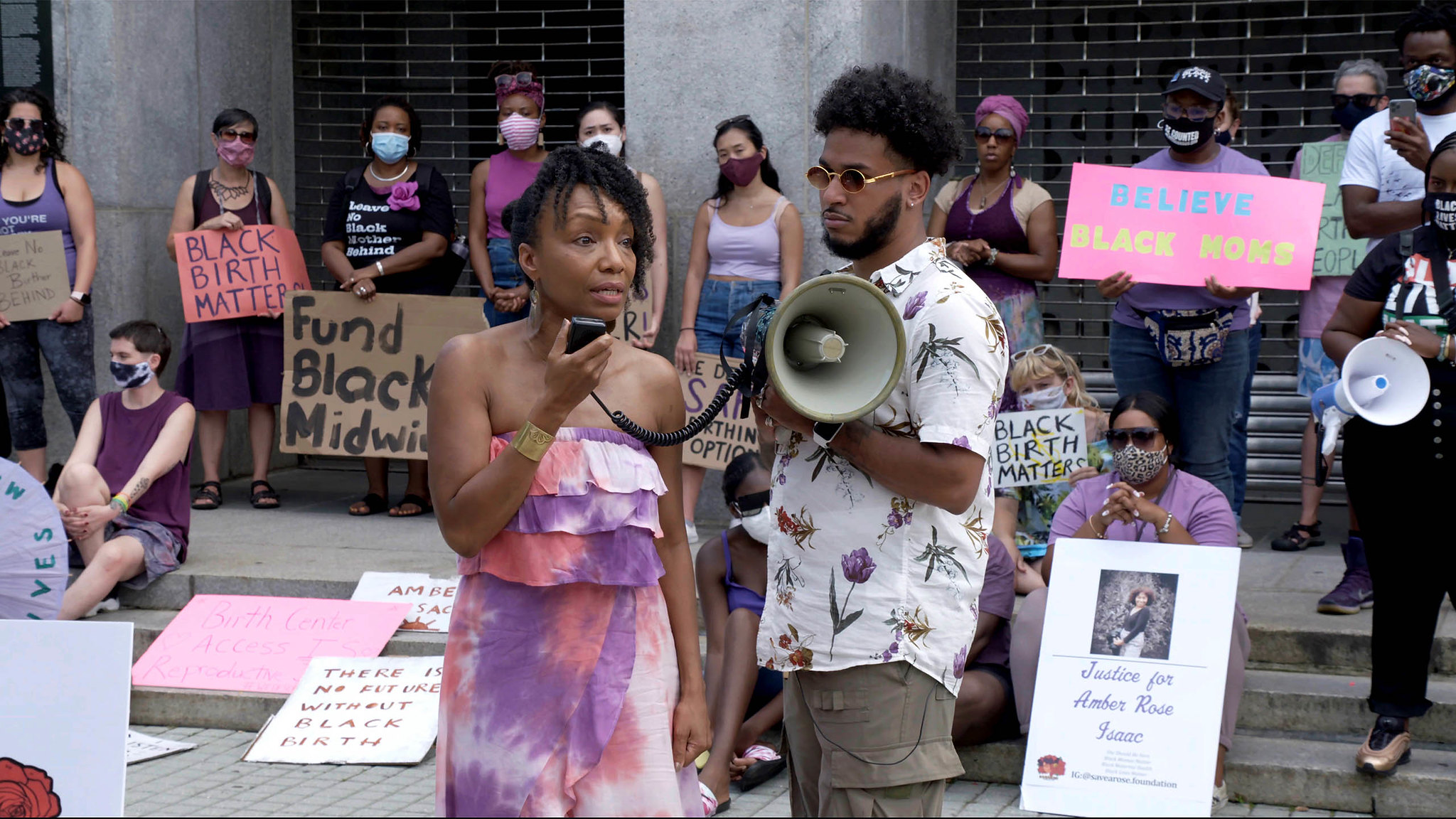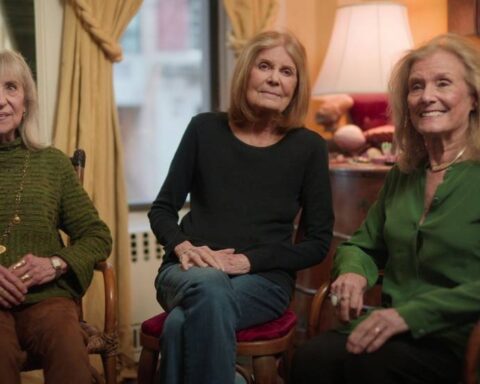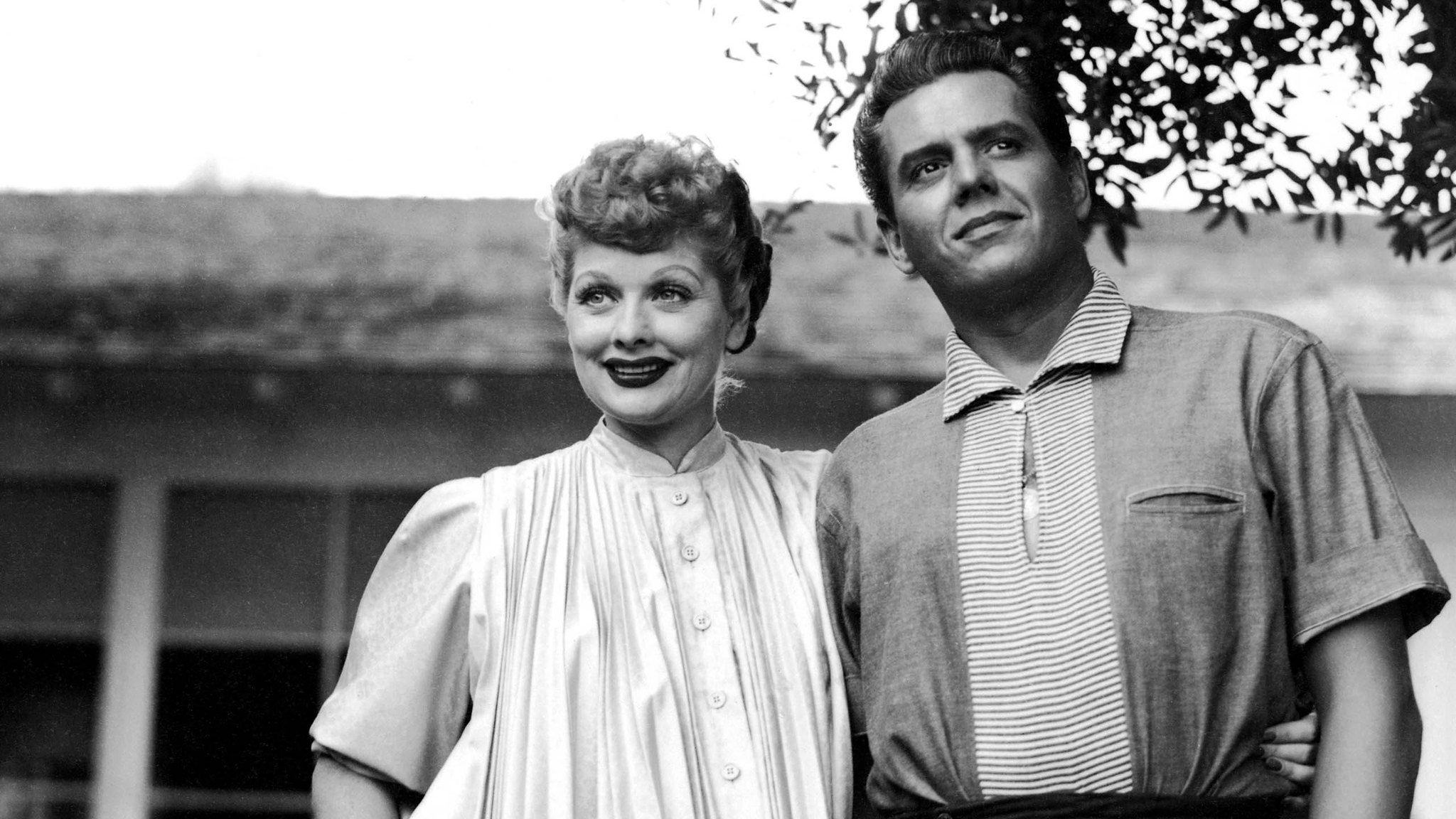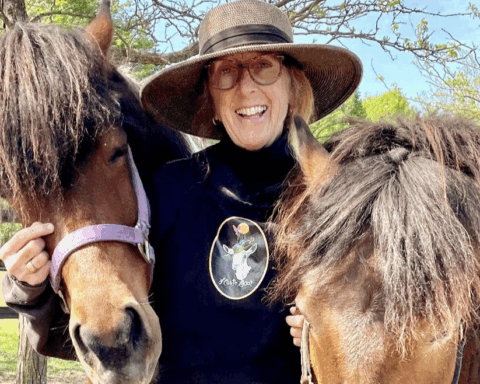Aftershock
(USA, 89 min.)
Dir. Paula Eiselt and Tonya Lewis Lee
Programme: U.S. Documentary Competition (World Premiere)
“Black wombs matter because a Black womb delivered you!” cries Shawnee Benton Gibson in Aftershock. Gibson, who tragically lost her daughter Shamony Makeba Gibson following a post-natal pulmonary embolism, speaks passionately at a rally to honour and preserve the lives of Black women. Shamony represents the disproportionate number of Black women who die because America’s health system utterly fails them. Black mothers are hit hardest and often serve as guinea pigs for new doctors, or quick bucks for hospitals to pay the bills. Aftershock gives voice to the families of two women, Shamony Makeba Gibson and Amber Rose Isaac, who lost their mothers, daughters, and partners during what should have been the happiest time of their lives. This powerful film refuses to let Shamony and Amber be statistics in an epidemic claiming Black women at alarming rates.
Directors Paula Eiself and Tonya Lewis Lee follow the partners of Shamony and Amber, Omari Maynard and Bruce McIntyre. The men continue their lives in the aftermath of grief. The single fathers raise their babies with bittersweet devotion. Observing the fathers as they juggle work and parenting, Aftershock situates their loss within a rampant systemic injustice. Accounts of the days that Shamony and Amber died prove disheartening. Disaffected first responders delayed care, while apathetic doctors ignored red flags on medical charts. Aftershock doesn’t hold back: these deaths were preventable.
A History of Violence
While Eiself and Lee boldly give ample airtime to the families to underscore the pain of their losses and to celebrate the lives Shamony and Amber briefly enjoyed, they zoom out to explore the breadth of the epidemic. Interviews with doctors, advocates, and academics contextualise the history of violence against Black women and their bodies. Caesarians, they note, are rooted in slavery. Aftershock recounts in unsettling detail how slave owners devised a method to deliver babies by surgery, rather than vaginal birth, so they could sew the mothers up quickly to produce more babies and, in turn, more slaves and more money for slave owners.
Similarly, talking heads explain the economy of caesarians over vaginal births. Hospitals use the same logic as slave owners, namely that cost/benefit should favour the institution over the individual. We learn how America’s privatised health system favours wealthier (re: whiter) patients who can afford private care and longer stays that allow them to deliver vaginal births without the risks of surgery. Women of lower economic standing (re: Black women and women of colour) rely on the revolving door of public doctors and the cheaper options they bring. Moreover, interviewees note how C-sections often offer practice sessions for residents to learn procedures. The turnaround time to boost profits and productivity, meanwhile, means that recovering mothers don’t receive the hospital’s full attention. As one young subject notes in Aftershock, her mother’s generation had better odds in the hospital than she does.
Scope and Focus
Then there’s the story of Felicia Ellis. The mother-to-be looks at alternatives beyond hospitals. “A Black woman having a baby is like a Black man at a traffic stop with the police,” she notes candidly.
Aftershock follows Ellis as she explores the prospect of birthing centres. Unlike the chaotic hospitals, the birthing centres give expecting mothers time and room to breathe. Aftershock situates Ellis’s story within the history of midwifery and the practice’s legacy of nurturing Black women. Yet the film sees the social turn against midwifery as emblematic of the white supremacy and misogyny that continues in the capitalist structure of privatised medical care. Ellis’s story, however, illustrates how much richer America could be if it put mothers first.
Eiself and Lee inevitably zoom out further as COVID-19 and the murder of George Floyd sharpen the injustices that Black families face. Like many docs shot during COVID, Aftershock assumes a heavy burden. These are huge conversations beyond the scope of the hospitals’ failures. Aftershock admittedly loses focus as it tries to account for myriad threads. There’s a lot going on here. However, COVID-19, George Floyd, and the Black Lives Matter movement deal with many of the same beasts and the ongoing undervaluing of Black lives. The filmmakers’ therefore faced the double-edged sword of lessening Aftershock’s relevance through omission. Including the wider conversations about Black life and systemic racism re-ignited in 2020 was the right decision. What’s lost in finesse is gained in fire.
Aftershock ultimately finds its power in Shamony and Amber’s families. Shawnee Benton Gibson in particular is an unforgettable character. She articulates her loss with passion, poetry, and palpable anger. There’s no argument for change more compelling than a mother’s grief.














